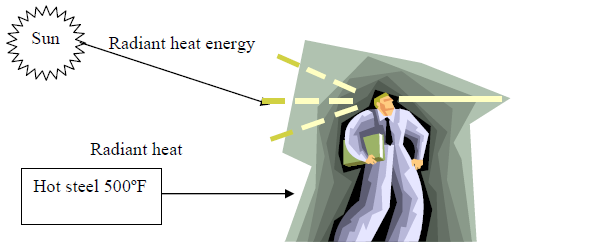Conductive heat transfer occurs when the atoms in a hot material or a hot portion of the same material bump into neighboring atoms that are cooler the hot atoms lose some of their energy they slow down and the cooler atoms that get bumped now are faster hotter. Heat transfer of bricks containing encapsulated PCM tested the storage and released the heat on the walls of the building models were evaluated in this study.

Evaluation Of Heat Transfer Characteristics Of Building Wall Elements Sciencedirect
Multiple PCMs which consist of three PCMs with different melting points are filled into a rectangleshaped cavity to serve as heat storage unit.

Heat transfer characteristics of building materials. Heat transfer through a building envelope can be attributed to a combination of conductive convective and radiative heat transfer components determined by the constituent material and its microstructure. This study examines the characteristics of heat transfer in walls using phase change material PCM in the form of encapsulation and using the sleeve as well. The melting and heat transfer characteristics of multiple phase change materials PCMs are investigated both experimentally and numerically.
One side of the cavity is set as heating wall. This controls the material thermophysical properties such as thermal conductivity specific heat and density. The Technical Data for this issue is broader in scope and addresses common building materials some of which are used in heat transfer.
1 conduction heat transfer which happens in solids 2 convection heat transfer which happens in fluids 3 and radiative heat transfer which happens in vacuum. This study examines the characteristics of heat transfer in walls using phase change material PCM in the form of encapsulation and using the sleeve as well. Transmittance reflectance and absorptance or emissivity describing the ratio of the transmitted radiated or absorbed radiation to the incident radiation.
Heat transfer of bricks containing encapsulated PCM tested the storage and released the heat on the walls of the building models were evaluated in this study. 25 rows The materials thermal properties govern the rate of heat transfer between the inside and. We sought to enable evaluations of heat transfer characteristics of mounted materials by developing a thermal characteristic measurement method and evaluation system that would support materials such as conductive adhesives.
Previous Technical Data columns have covered thermal properties for many of the materials that are common to electronics packaging. This paper has presented the technology we developed to enable good-precision measurement of heat transfer. Heat transfer causes items to become the same temperature.
Characteristics of heat transfer in walls using phase change material PCM in the form of encapsulation and using the sleeve as well. C Material or building element-related problems- cold-bridge effect convection within porous insulation moisture condensation due to simultaneous flow. Heat the Ultimate Form of Energy.
Heat always moves from a warmer place to a cooler place so cold items heat up to room temperature while warm items cool down to room temperature. 8 rows The detailed and overall heat transfer characteristics of four commercial wall structures are. Heat transfer at the building envelope and on the human body determine thermal comfort.
Heat transfer of bricks containing encapsulated PCM tested the storage and released the heat on the walls of the building. Convective and radiative heat transfer of internal heat sources such as heaters coolers and occu pants thermal storage in interior masses. Material properties related to hygric performance eg water vapor permeance permeability air permeance sorption isotherms are also given for several materials.
These properties vary depending on the wavelength and angle of the incident radiation. High thermal resistance of insulating layers reduces temperature amplitudes felt on the human skin. Articles Materials Compounds Adhesives Substrates Technical Data Thermal Properties.
Heat transfer through a building envelope can be attributed to a combination of conductive convective and radiative heat transfer components determined by the constituent material and its microstructure. Thermal Properties Of Building Materials. February 1 2008 Jim Wilson PhD.
Thermal conductivity and specific heat are provided for a wide range of building materials. This controls the material thermophysical properties such. The transfer of heat occurs consistently to make everything the same temperature.
The thermal optical properties of a material are a function of three basic parameters.

Greenteg 3 Types Of Heat Transfer Conduction Convection And Radiation Three Types Of Heat Transfer

Heat Transfer Between Human Body And The Environment 4 Download Scientific Diagram
Heat Transfer Energy Models Com

What Is Heat Transfer Simwiki Documentation Simscale

This Link Provides Insight Into How Radiation Works As Well As Equations That Are Used To Determine The Thermal Trans Radiation Thermal Transfer Heat Transfer

Heat Transfer Equipment An Overview Sciencedirect Topics

What Is Heat Transfer Simwiki Documentation Simscale

Basic Mechanisms Of Heat Transfer In A Match Flame Convection Allowed Download Scientific Diagram

Heat Transfer Through Buildings Jlc Online

Heat Transfer Energy Models Com

Irjet Heat Transfer Enhancement In Heat Exchanger Using Passive Enhancement Technique Https Www Deep Learning Business Intelligence Learning Techniques

Evaluation Of Heat Transfer Characteristics Of Building Wall Elements Sciencedirect

Average Heat Transfer Coefficient Of Copper Foam And Aluminum Metal Download Table

Irjet Development Of Energy Efficient Heat Sink By Augmentation Of Natural Convection Heat Transfer Wireless Sensor Network Department Of Mechanical Engineering Application Android

Heat Transfer Through Buildings Jlc Online

Heat Insulation Compound Thermal Insulation Materials Insulation Materials Thermal Insulation

Komentar
Posting Komentar